Hawaiian Bliss

Makapuu Look Out
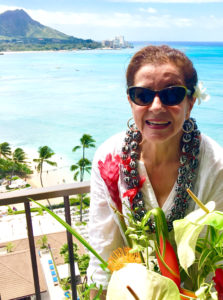
Patricia in Waikiki
Oahu has been a magnet for tourists almost since the days of Hawaii’s last kings, and it’s easy to understand why when you rent a car and tool around the dramatically lush and mountainous island. Unfurl your towel on any of its countless palm-fringed beaches, ride on horseback through the rain forest or straight under an unexpected rainbow. Or just kick back and immerse yourself in the island vibe of the Aloha State—the youngest and inarguably the most exotic of our fifty-state union.
The volcanic eruptions happening on the not-so-nearby Big Island (also confusingly called the island of Hawaii) felt light-years away during my stay earlier this month, but alarming headlines were worrisome to those back home wondering about my safety. Geography-challenged friends weren’t aware that Hawaii is an archipelago of eight main islands, and Oahu—the third largest—is consistently calm thanks to its reliably inactive volcanoes. One of its most beloved landmarks is Diamond Head volcano, whose dormant caldera has served as the venue of Woodstock-like rock concerts and today is more popular for the 45-minute climb to its 760-foot-tall brim for in the round views of paradise.
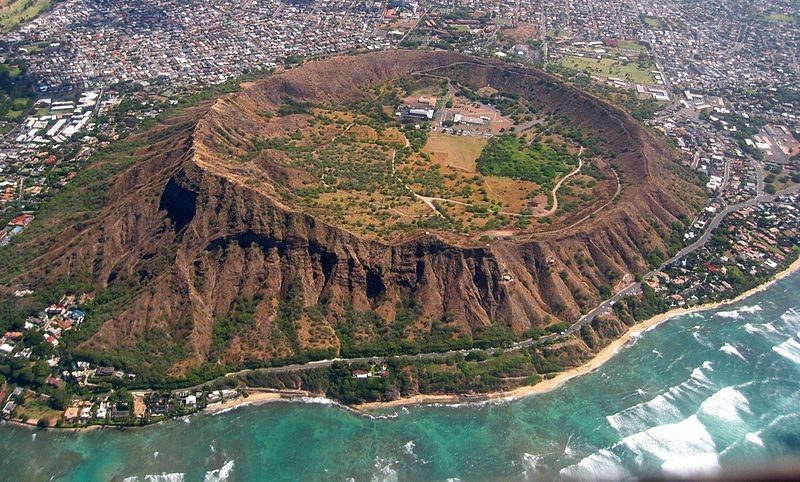
The popular hike to Diamond Head’s brim provides 360 views.
As the state capital and largest city of the Pacific islands, Honolulu—located on Oahu’s southern coast—is home to approximately one million inhabitants (about two-thirds of the state’s population)—a fusion of Eastern and Western cultures rooted in traditions of the native Hawaiian people and Pacific Islanders (“Oahu,” after all, means “gathering place”). It is closer to Tokyo than it is to New York and feels as Asian (stop by Chinatown for lunch for confirmation) and Polynesian as it does mainstream American—the very reason “mainlanders” find it so fascinating.
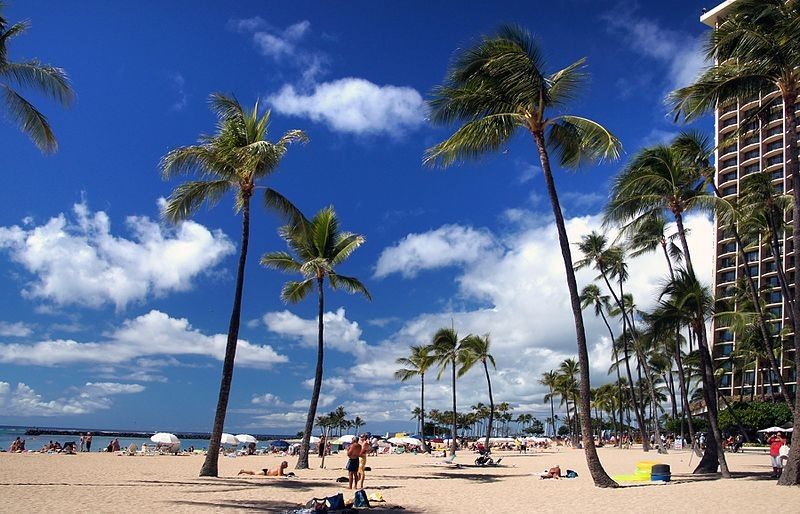
For visitors, life in Honolulu revolves around Waikiki.

Traditional Hawaiian dance
Few cities of this size can boast an urban beach of great beauty, heritage, fun, and renown, but Waikiki may possibly be the world’s finest in that regard. Its history harks back to Hawaiian royalty who built their homes along this crescent stretch of sand and, more recently, the surf scene that cemented its enduring fame. Although its development of sleek condominium towers and hotel resorts has slowed in recent years, Waikiki remains the heartbeat of the island and its epicenter for eating and shopping around the clock. Its public beach stretches for miles, in some sections busy with swimmers, surfers, and SUP first timers, while other less crowded spots are perfect for sunbathing or simply taking it all in—the natural beauty, the vacationing honeymooners and families, or the perfect sunset.
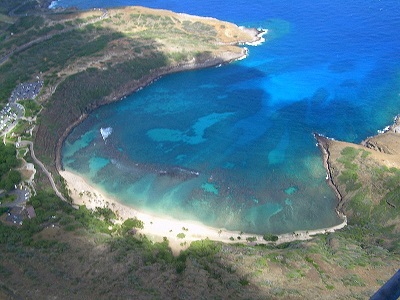
Well known for its stellar snorkeling, Hanauma Bay is an easy daytrip from Honolulu.
Those who never venture beyond this vibrant vortex do a great disservice to the island’s offerings, many of them found along the 200-plus miles of coastline. You can flight-see it all with a white-knuckle helicopter tour, or join a day-long bus excursion that hits all the highlights. Renting a car or jeep is easy enough, but I didn’t want to miss out on any of the old Hawaiian legends or best garlic shrimp food trucks, so we booked a private tour of the island with Nau Wale No (“Just For You”) Tours, custom tailored to how we wanted to spend our jam-packed day.
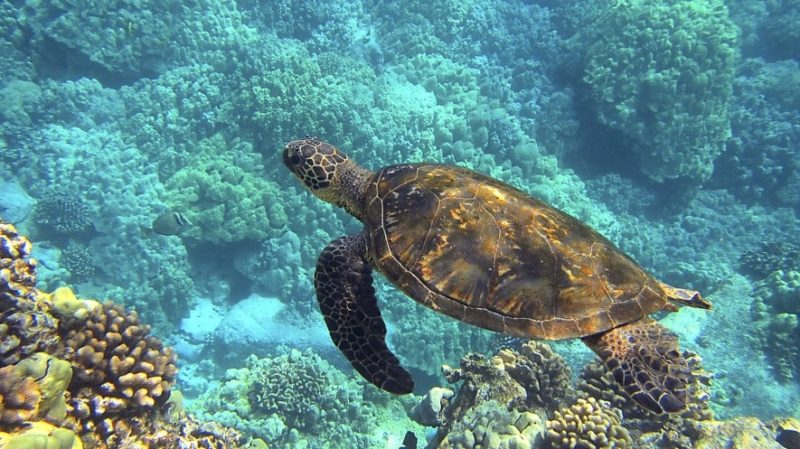
Sea turtles are commonly spotted at Hanauma Bay.
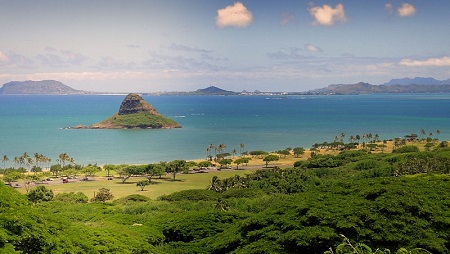
Chinaman’s Hat off Windward Coast
There is no scarcity of postcard-perfect beaches on this island that measures 44 by 30 miles, many of them an easy day trip from Honolulu. Protected and calm, Hanauma Bay’s easy 10-mile proximity to Honolulu explains much of its popularity, but it is world known for some of the finest snorkeling anywhere, with clouds of colorful fish for those who don mask and fins. Attention focuses on the beauty above the water line at the cluster of Waimanalo Bay’s less-visited beaches (Lanikai and Kailua are just a few) just north of Hanauma. Their soft, powdery sand and turquoise waters are the very definition of what visitors to Hawaii expect, and Waimanalo does not disappoint.
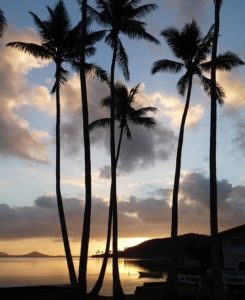
Sunset
Follow the eastern coast’s meandering two-lane highway north and idyllic sandy stretches and scenic lookout points roll by. This is Oahu’s windward side, where the Pacific trade winds blow directly on shore almost constantly—offering cool comfort to beach goers on hot afternoons. It also blows in clouds that bring rain sometimes not seen on the island’s other shores but is the reason this side of the island stays so lush. Green valleys and dense rainforest have been the backdrop in television shows such as ‘Lost’ and ‘Hawaii Five-O’ at the generations-old family-owned Kualoa Ranch, where you can sign up for horseback riding and other activities. Movie-goers may also find it familiar: the stampede scene and other primeval scenes in Jurassic Park were filmed here.

The Polynesian Cultural Center showcases life in the Pacific islands.
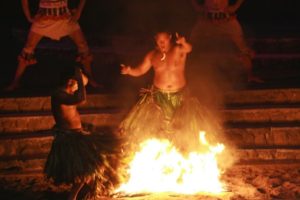
Fire and dance at the Polynesian Cultural Center.
We continued north past busy farm stands, unpretentious BBQ stops, frequent food trucks, and no-traffic-light towns, before arriving in Laie on the North Shore, home of the Polynesian Cultural Center, a kind of theme park and living museum and one of the state’s most visited sites. We wandered among a handful of recreated villages scattered across 42 acres, each celebrating the unique Polynesian cultures of Samoa, Aottearoa (New Zealand), Tahiti, Tonga, and Hawaii, among others. Entrance is not inexpensive (there are various packages available), and it is not easy to get here from Honolulu (although there is a 70-mile roundtrip shuttle bus that is organized by the PCC), but it is insightful and educational for all age groups and especially a big hit with families with young children. Many visitors seem to come for the engaging luau, dinner, and entertainment, one of the island’s best. And while it was delicious and enjoyable enough (its varied all-you-can-eat buffet is fresh and well organized, and the fun audience represented all age groups and nationalities), we were happy to have also signed on for HA: The Breath of Life, the excellent show that followed. More than 100 performers tell the story of life and death (infused with the importance of family, love, and tradition) through animated song and dance by islanders from across the Pacific. It had been described to me as Lion King meets Polynesia—and with its impressive level of professionalism and enthusiasm, I didn’t want it to end.
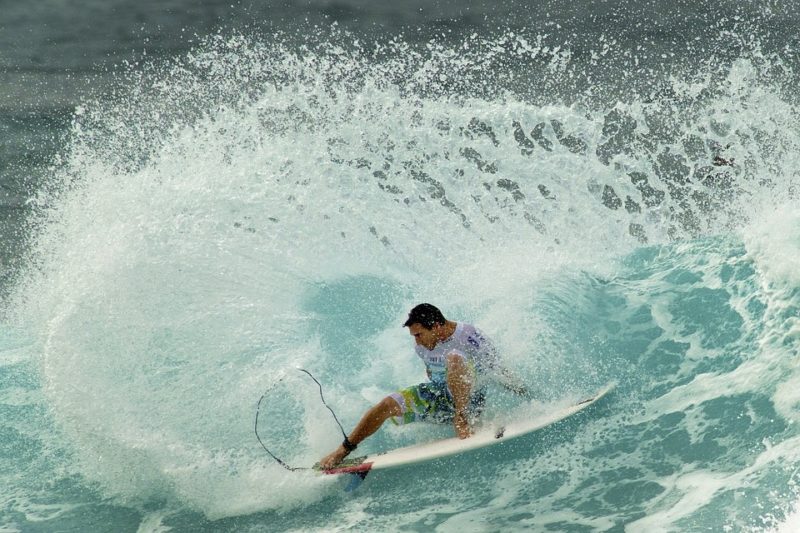
World champions arrive every winter when the North Shore becomes a surfing mecca.
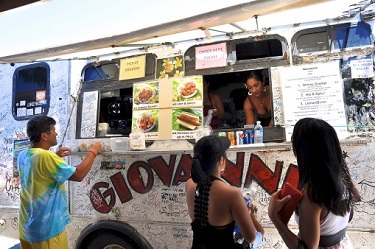
The North Shore food trucks have a loyal following.
Anyone with the slightest interest in surfing will want to spend a few hours on Oahu’s legendary North Shore, both spiritual home and testing ground of Hawaii’s quintessential sport. In winter, when monster swells from Pacific storms rush unimpeded toward reef breaks, cars line up bumper to bumper along the road to Waimea Bay, Haleiwa Beach, Sunset Beach, and the fabled Banzai Pipeline off Ehukai Beach, the three beaches where the world’s best surfers compete for the Vans Triple Crown of Surfing. Yet in April to October, these same tumultuous waters settle down, attracting swimmers, snorkelers, and picnicking families. Haleiwa is the only real town of note, with quirky shops, lots of eateries and food trucks, and popular stands selling rainbow shave ice or the area’s signature Dole Whip, a swirl of pineapple-flavored soft-serve ice cream from the nearby Dole Plantation.
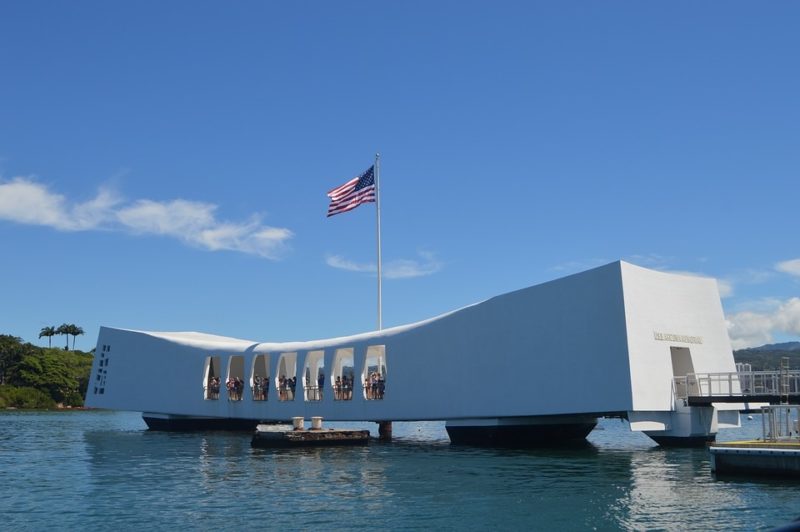
The USS Arizona at Pearl Harbor is the most visited site in Hawaii.
Of all the stunning natural beauty, hiking trails, water sports, excellent culinary and retail therapy, and lazy flip-flop beach life that Oahu promises, a visit to Pearl Harbor naval base just outside Honolulu may be the one most memorable experience remembered by most. To join the 1.7 million annual visitors who come to see the USS Arizona Memorial and learn about the surprise attack by the Japanese on December 7, 1941, that launched the US into World War II, it is easiest to book a guided tour in advance, though a good number of free tickets are dispensed every day.
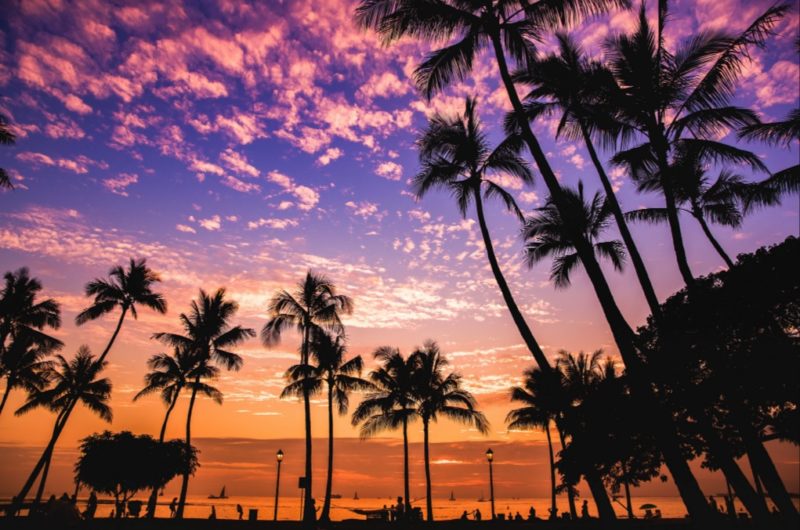
In Waikiki, the sun sets on another day in paradise.
Of Hawaii’s eight main islands, Oahu offers the most variety and number of attractions in every sense, or as one T-shirt reminds us: “Oahu: we’re more than just hula and mai tais.” I for one—being pressed for time—left much of the island unexplored, thus ensuring a return to the land of Aloha.
And don’t forget to check out the book!
 About the Book:
About the Book:
The world’s bestselling travel book is back in a more informative, more experiential, more budget-friendly full-color edition. A #1 New York Times bestseller, 1,000 Places reinvented the idea of travel book as both wish list and practical guide. As Newsweek wrote, it “tells you what’s beautiful, what’s fun, and what’s just unforgettable—everywhere on earth.” And now the best is better. There are 600 full-color photographs. Over 200 entirely new entries, including visits to 28 countries like Lebanon, Croatia, Estonia, and Nicaragua, that were not in the original edition. There is an emphasis on experiences: an entry covers not just Positano or Ravello, but the full 30-mile stretch along the Amalfi Coast.
Every entry from the original edition has been readdressed, rewritten, and made fuller, with more suggestions for places to stay, restaurants to visit, and festivals to check out. And throughout, the book is more budget-conscious, with starred restaurants and historic hotels such as the Ritz, but also moderately priced gems that don’t compromise on atmosphere or charm.
The world is calling. Time to answer.
Buy the Book
Amazon | B&N | Indiebound | Workman

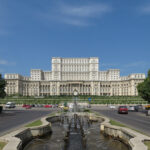
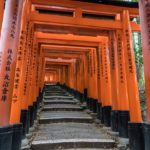
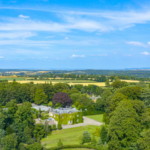
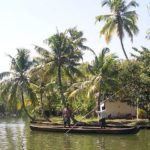
No Comments